Click on images to enlarge
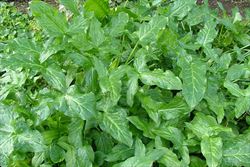
infestation (Photo: Sheldon Navie)
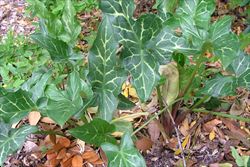
habit (Photo: Sheldon Navie)
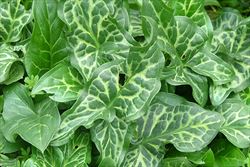
variegated leaves (Photo: Sheldon Navie)
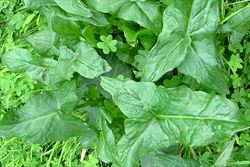
plain green glossy leaves (Photo: Sheldon Navie)
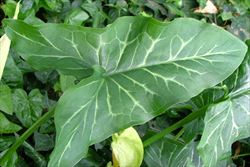
close-up of arrowhead-shaped leaf blade (Photo: Sheldon Navie)

flower cluster partially enclosed in large pale green and/or whitish coloured bract (Photo: Sheldon Navie)
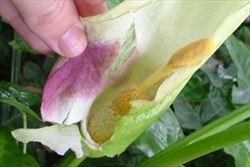
elongated flower cluster with separate male and female flowers (Photo: Sheldon Navie)
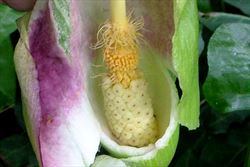
close-up showing yellow male flowers above the greenish-white female flowers (Photo: Sheldon Navie)
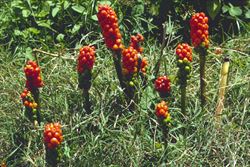
clusters of mature fruit (Photo: Trevor James)
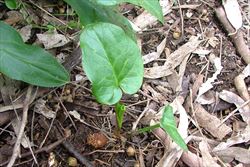
young plant growing from a tuber (Photo: Sheldon Navie)
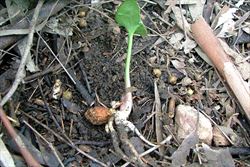
"tuberling" removed from the ground (Photo: Sheldon Navie)
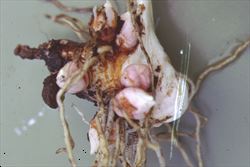
close-up showing development of multiple young tubers from an older tuber (Photo: Trevor James)
Scientific Name
Arum italicum Mill.
Family
Araceae
Common Names
Aaron's rod, cuckoo pint, Italian arum, Italian arum lily, Italian cuckoo-pint, Italian lily, large cuckoo-pint, Lords and Ladies
Origin
Native to the Azores, the Madeira Islands, the Canary Islands, northern Africa (i.e. northern Algeria, northern Morocco and northern Tunisia), Europe (i.e. UK, Switzerland, France, Portugal, Spain, Albania, Bulgaria, Greece, Italy, Yugoslavia, Ukraine and south-western Russia) and western Asia (i.e. northern Turkey, Armenia and Georgia).
Naturalised Distribution
Naturalised in some parts of south-eastern Australia (i.e. in some parts of central and southern New South Wales, in southern Victoria and in south-eastern South Australia). Also sparingly naturalised in south-western Western Australia (i.e. it has been reported from Dwellingup).
Notes
Italian arum (Arum italicum) is regarded as an environmental weed in Victoria and as an emerging or potential environmental weed in Western Australia and New South Wales. It has escaped from gardens and invaded creek-banks, riparian vegetation and urban bushland. It has been recorded growing in conservation areas in Victoria (e.g. in Morwell National Park and Bay of Islands Coastal Park) and New South Wales (i.e. Irrawong Reserve in Sydney and Bill Smyth Reserve in Eurobodalla Shire).

